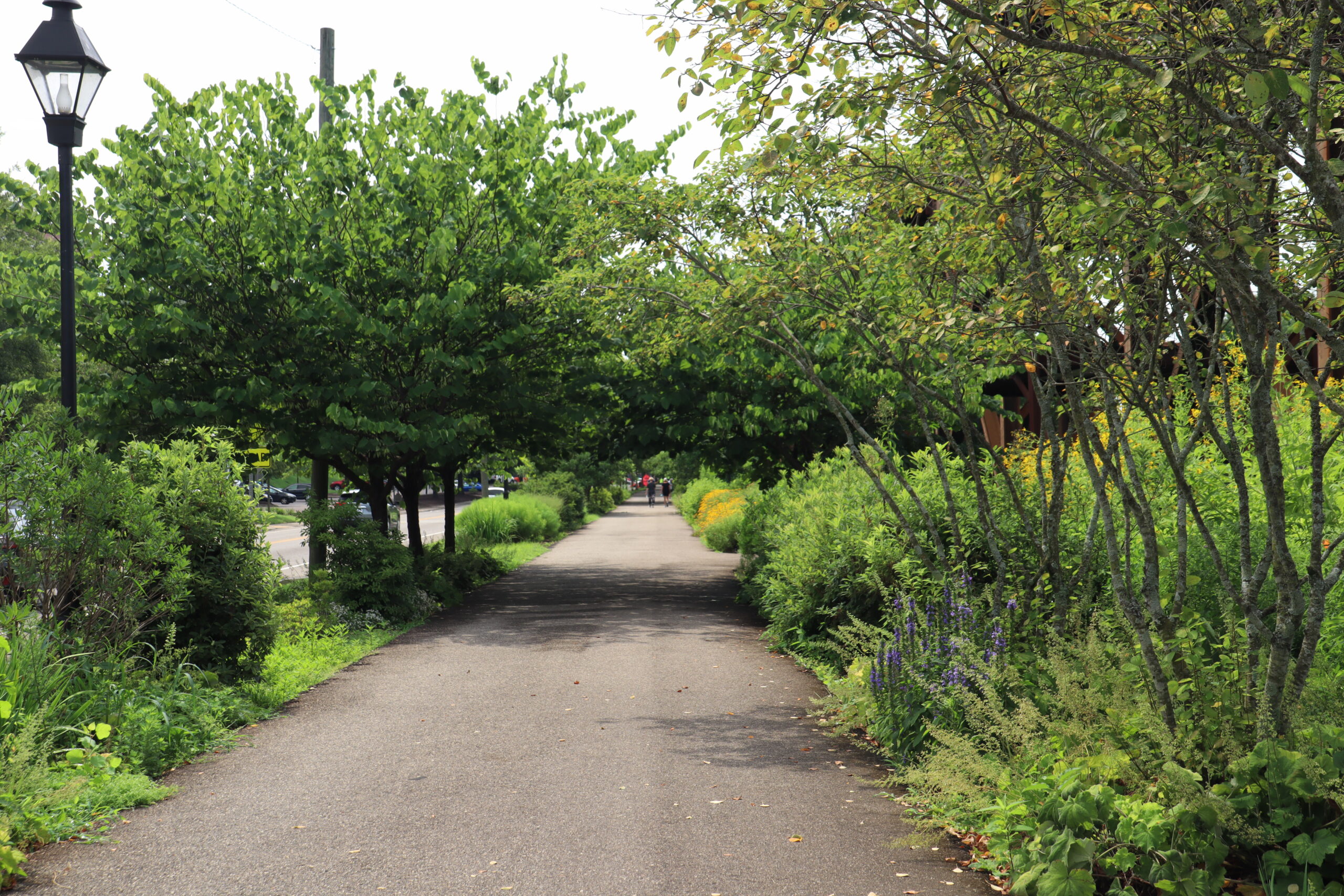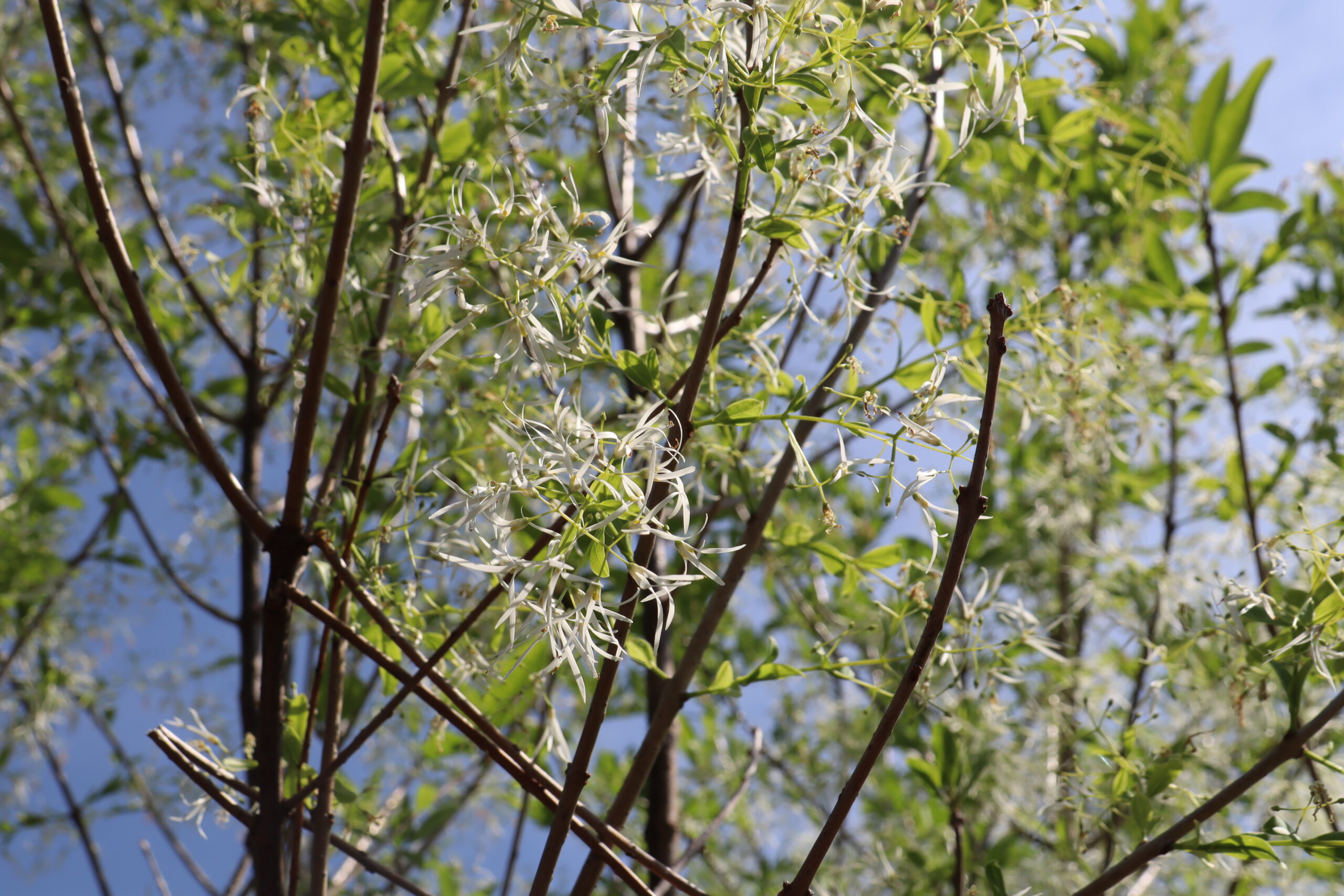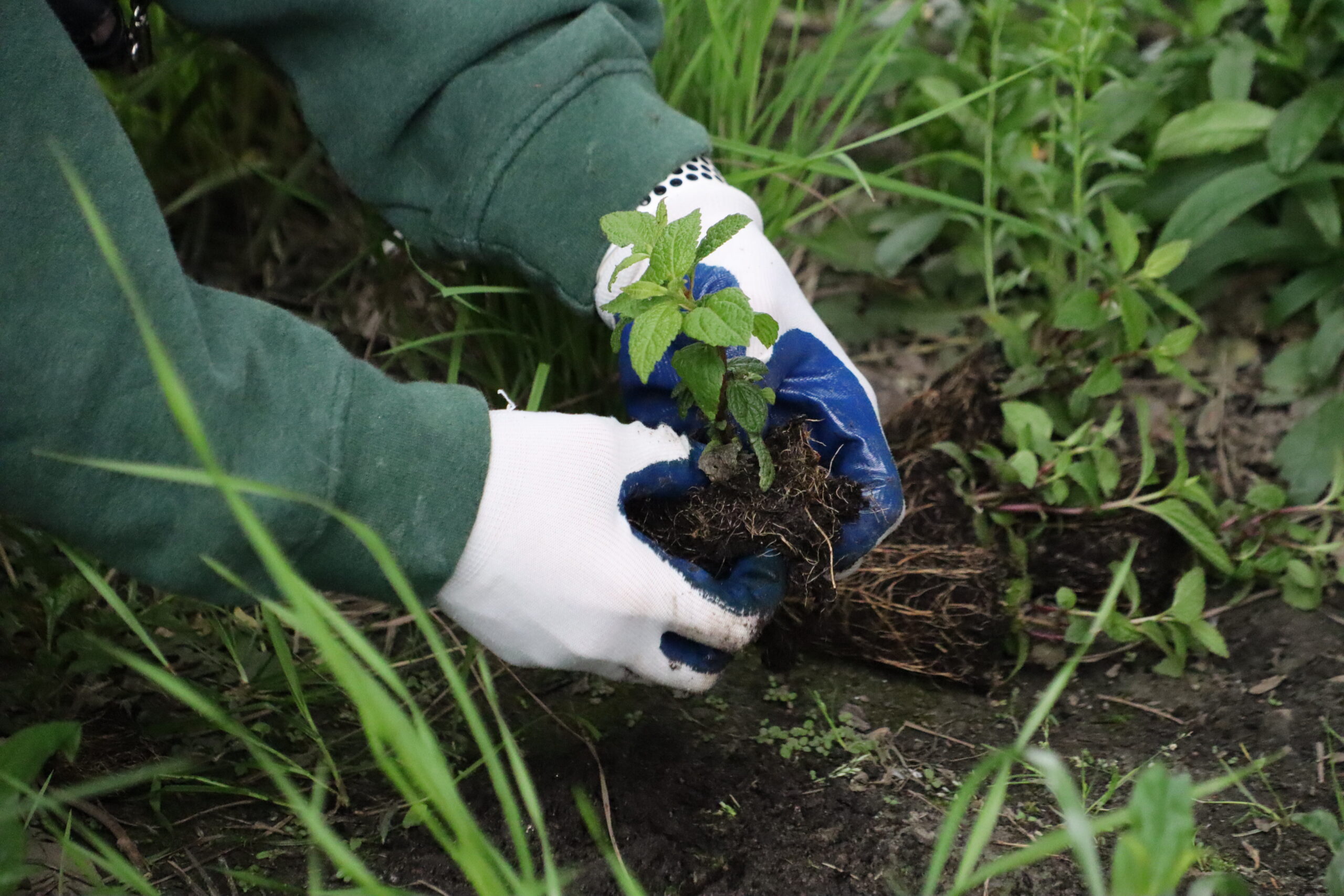April Tree Talk: Amelanchier Replacement Along the Low Line
Written by: Mary Petres
If you really want to embrace gardening and nature and not lose your mind, it is critical to accept the fact that the landscape is ever changing. Some changes are within our control, most are not. The garden will be amazing, frustrating, challenging, but never perfect. Striving for perfection ruins the journey. Embrace what you see and learn each time you put a foot in nature. At Capital Trees we are constantly learning from our gardens.
A tremendous amount of thought goes into each installation. Does it all turnout as envisioned? No! Some things are so much better than anticipated and others can be disappointing. Today’s blog addresses one of the disappointments.
If you have visited the Low Line Gardens (situated on Dock Street in Downtown Richmond between 17th st and Pear st) you will have noticed linear groupings of various trees. Originally designed as an allee of river birch (Betula nigra), this space was ultimately planted with six different tree species to increase biodiversity and mitigate potential tree loss in the future. One of these trees was Amelanchier canadensis. More commonly known as Serviceberry, Shadbush, and Juneberry.

The Amelanchier form a short allee of three trees each, and on paper seemed like a great choice for the gardens. When happy, this native Virginian tree grows 15 to 25 feet tall. In spring it features showy, fragrant white flowers which form purple berry-like drupes that birds and humans alike find to be tasty. In the fall the leaves turn showy red and orange. In its native habitat it is often found growing next to bogs, swamps, and lowlands and was originally chosen because it grows well in various soil types. It is also attractive to wildlife as a nectar source for early pollinators, and as a food source for birds and mammals, while still offering spring and fall aesthetic value to humans.
Unfortunately, our trees have failed to thrive. While we cannot quote scientific studies to explain the failure we can share our observations. Although the gardens border the canal, they also run along Dock Street. We have observed that the hotter temperatures in the gardens due to close proximity to the city street seem to accelerate the life cycle of the tree and keep it under tremendous stress. By July, the leaves start to discolor and fall, leaving very few leaves, if any, by August let alone October.

Another challenge with the Amelanchier in this garden is that it is susceptible to a plant pathogen called Gymnosporangium juniperi-virginianae, which is known to cause cedar-apple rust. The cedar apple rust can be a destructive and disfiguring disease on both the apples and cedars, and can ultimately impact any plant in the Rose family as a potential target.
Quick facts
-
Cedar-apple rust and related rust fungi need plants from two plant families to complete their life cycle; Cupressaceae family (eastern red cedar and other junipers) and Rosaceae (apple, hawthorn, serviceberry).
-
Bright orange to red leaf spots occur on apples, hawthorns, and other plants in the Rosaceae family.
-
Hardy woody galls, witches brooms and swollen stems covered in gummy, orange, fungal growth in spring occur on juniper and eastern red cedar.
-
These fungi rarely cause serious damage to their hosts and do not require management in most cases.
While the fungus has not killed the trees, it leaves them in an aesthetically undesirable condition for most of the summer and fall, and prevents them from providing the necessary shade and heat mitigation needed during the hotter months like August and September. Between the fungus and the heat island impact from the road, the trees are under constant stress and fail to thrive and reach their potential.
After years of observation and discussions with our partners at the Department of Forestry we made the decision to replace the trees. Stage one was to replace the Amelanchiers in the gardens immediately adjacent to the road, as this is the most taxing of the planting locations and would give us the opportunity to test if the new tree selections would thrive in this location. If they can survive in the plots between Dock Street and the Capital Trail they should also do well in the gardens farther from the road.

We chose the native fringe tree (Chionanthus virginicus) as our replacement. So far the trees seem to be thriving, and a much better fit for some of the challenges we face when gardening in urban landscapes. They progressed through the first summer and winter with flying colors, and this spring seems to be no exception, with the new trees actively in bloom. Assuming that this species continues to flourish over the summer, we will replace the remaining Amelanchiers with additional fringe trees in the fall.
We are excited about the new addition to the gardens and look forward to watching the fringe trees shine. I am sure another curve ball awaits us around the corner, but for today we are content to enjoy this moment and the gardens. If you have not yet visited the Low Line this spring we encourage you to come and take a stroll.
References:
https://plants.ces.ncsu.edu/plants/chionanthus-virginicus/
https://extension.umn.edu/plant-diseases/cedar-apple-rust
April — Urban Green Space Maintenance

April has been a busy month in the gardens. We have hosted several private workdays with local groups and businesses. The volunteer groups tackled everything from transplanting and cutbacks to pruning and weeding. Our volunteer program helps us maintain and care for the gardens without the use of harsh herbicides and pesticides, and provides a meaningful hands-on activity for volunteers.
April — Featured Trees Seasonal Update
This year we’ll be documenting the same two trees as they progress out of dormancy, bud out in the spring, are full of foliage in the summer, and lose their leaves in the fall. Follow along for monthly updates on the River Birch and Eastern White Redbud along the Low Line Gardens in Richmond, Virginia.

April — Spotted at Hotchkiss Field Community Center!

The Groundworks Green Team was out at the future green space at Hotchkiss Field Community Center last week getting acquainted with the space and assessing areas to start doing some temperature data collection. We can’t wait to see the results of what they will collect from before, during, and after the new green space installation! The temperature tracking will hopefully record data to support what we’re aiming for with the green space — cooler temperatures on the ground for residents.


